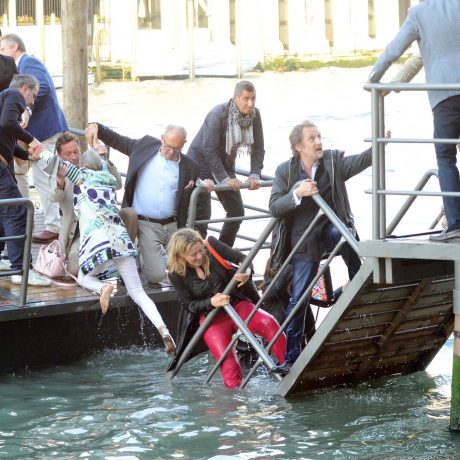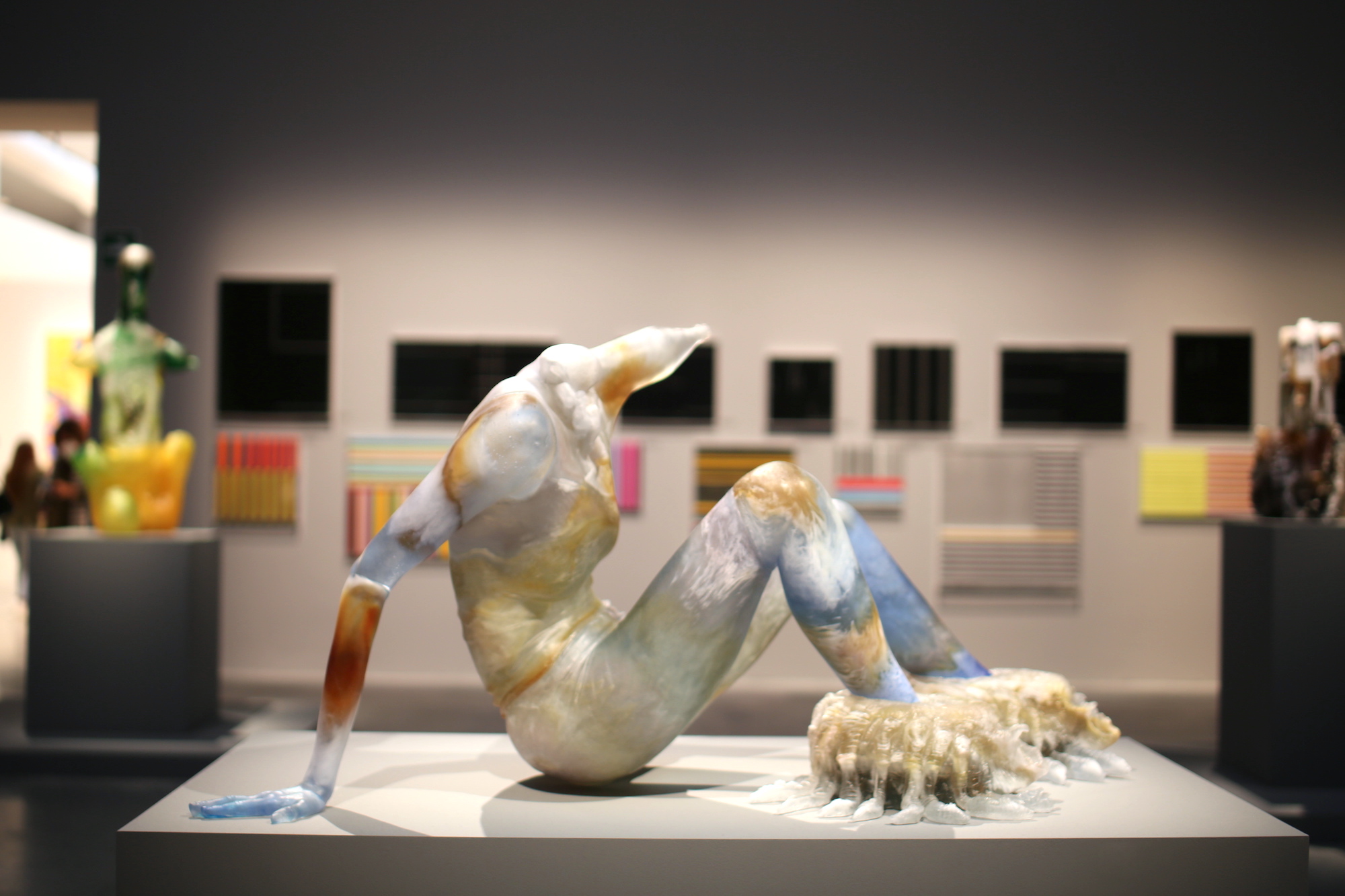
TUESDAY 19 APRIL
It is with trepidation and self-consciousness that I set off for Venice. Against a backdrop of war, the increasingly unaffordable cost of living and rising Covid rates, it is such an indulgence to spend a few days in one of the most beautiful cities in the world for a work trip.
Slowly the excitement builds, as I know that I will see more art in two days than I’ve seen in the last two years and that I will have the chance to catch up in person with my art ‘family’. I bump into peers I’ve seen on Zoom, but rarely recently in real life, including Rosie Cooper, who has recently become the director of Wysing Art Centre in Cambridgeshire, and Francesco Manacorda, who even more recently resigned as artistic director of the V-A-C Foundation in Moscow, taking decisive action as soon the Russians invaded Ukraine.
“I will see more art in two days than I’ve seen in the last two years and will have the chance to catch up with my art ‘family’”
I have dinner with my friends Kate Fowle (director of PS1 in New York) and Deborah Smith (director of the Arts Council Collection). We started our careers at the same time, and to be able to catch up in person is very special.
On a slow walk home across the Academia Bridge, we have a serendipitous encounter with Margot Heller, director of South London Gallery, a friend, colleague and mentor across the years to all of us. It feels really good to be here.
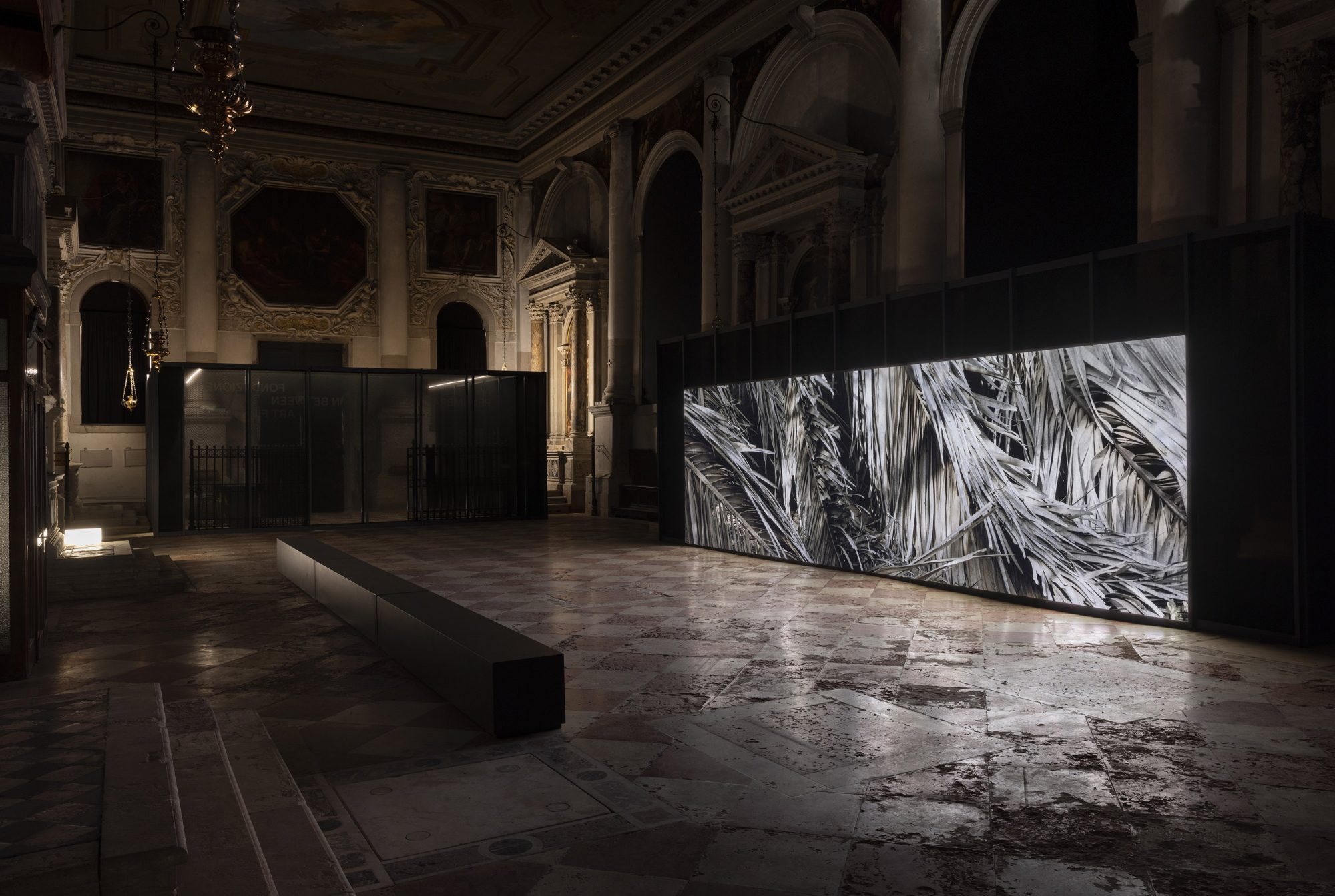
WEDNESDAY 20 APRIL
I set out to see some of the off-site exhibitions, wanting to build up my stamina before I face the main Biennale sites. It also gives me a chance to walk around the back streets of Venice that I first got to know when I worked here for three summers as an art student.
First stop for a breakfast preview is Penumbra, commissioned by Fondazione In Between Art Film. It offers a masterclass in how to install multiple video installations in an historical Venetian palace. Another stop is the Church of San Lorenzo to visit Ocean Space, an ongoing cultural centre dedicated to the advocacy and promotion of ocean conservation set up by the TBA21-Academy.
These considered exhibitions strike a different tone to some of the other off-site shows that appear more commercially opportunistic. This year there is a notable lack of super-yachts moored in Venice, not least because many have been sanctioned, but the wealth is still in town, staying in the best hotels and eating at the finest restaurants.
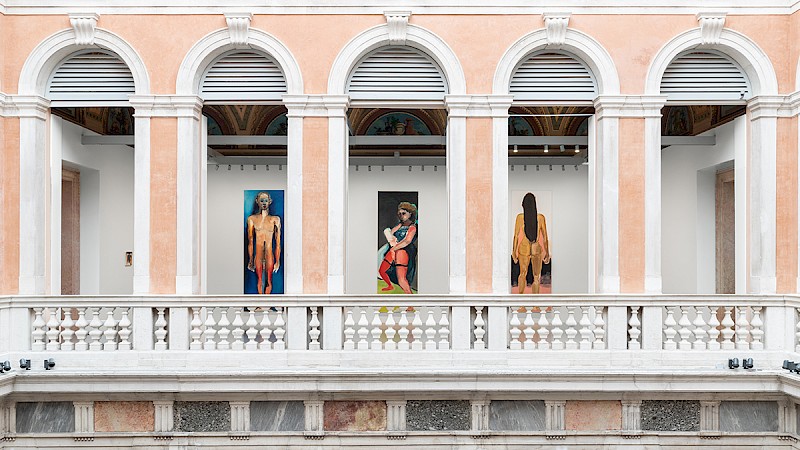
Next is the Palazzo Grassi to see Marlene Dumas’ open-end, presented by the Pinault Collection, a carefully curated selection of her paintings which reveals the full spectrum of human vulnerability and emotion intelligence. Then after a late lunch and a brief rest, it’s on to see Pranayama Typhoon by Fiona Banner aka The Vanity Press. This new film is shown in a school gymnasium set within a converted church: drinks are held in the school playground and we dodge footballs and kids as they play in the after-school sun.
“Weddings and biennials are nearly the only times I dance these days”
After a stop at the London Aperitivo Drinks, it’s time for the Tate in Venice drinks at the Scuola Grande di San Rocca. By the time I’ve reminded myself just how awesome the Tintoretto paintings are, the bar is running dry and all the Brits move en masse to the British Pavilion Party at the Archivio di Stato just round the corner. There are speeches, performances and a great DJ set that offers a chance to show our collective love for Sonia Boyce on the dance floor. Weddings and biennials are nearly the only times I dance these days.
By the end of Wednesday night, I’ve walked a total 33,000 steps or 24 kms (plus a few hours dancing). It’s a form of Art Boot Camp. I sleep well.
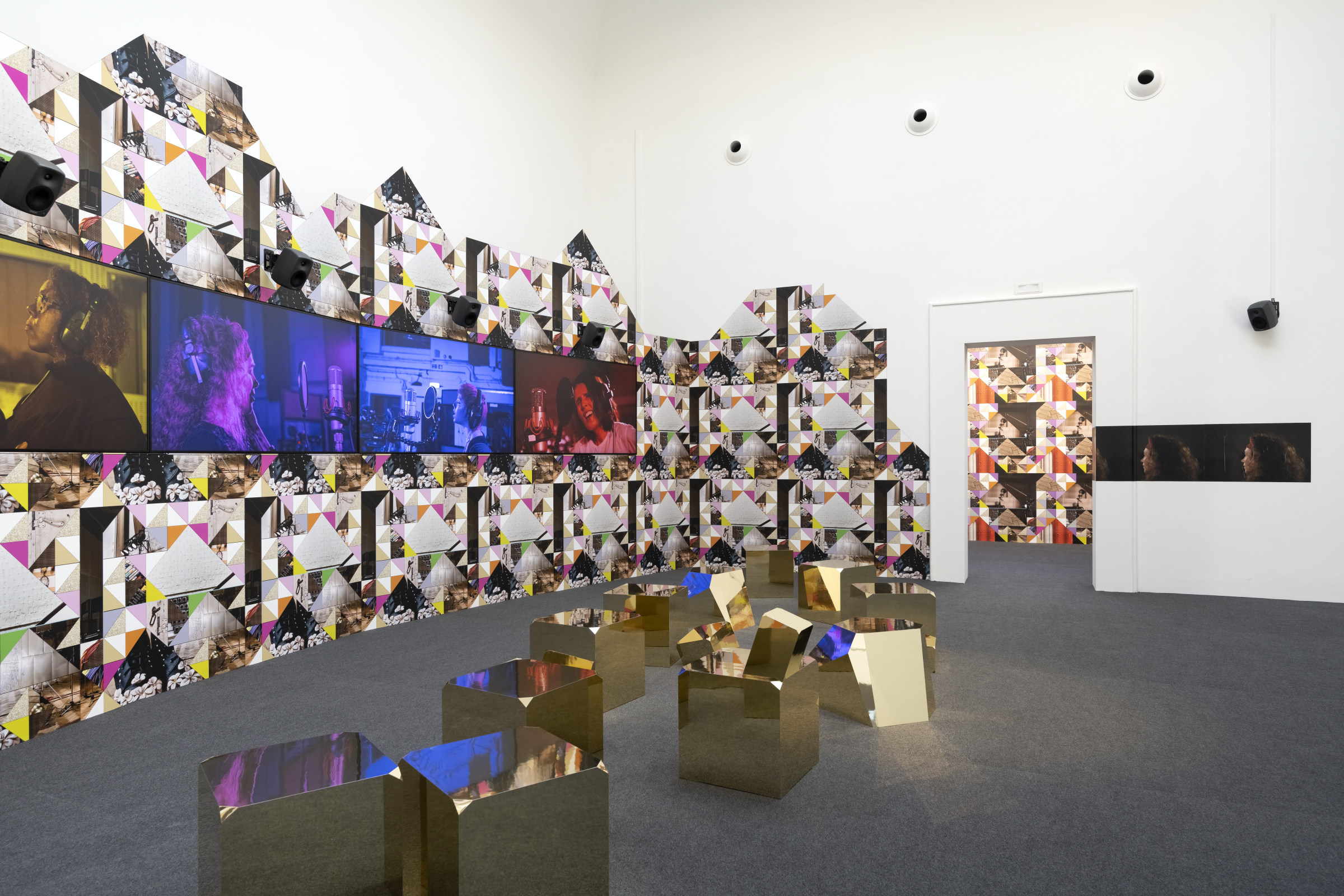
THURSDAY 21 APRIL
The next morning, I’m up and out to the breakfast viewing of Raqib Shaw’s exhibition, Palazzo della Memoria at Ca’Pesaro, Venice’s International Gallery of Modern art. Raqib has come a long way since I first curated an Art Now show with him at Tate Britain. While the exhibition explores his enforced exile from his homeland in Kashmir, his paintings are still founded in the decorative arts and miniature painting tradition of this region.
Then it’s on a crowded vaporetto to the Giardini, where I join the queue for the British Pavilion. Feeling Her Way (2022) by Sonia Boyce and curated by Emma Ridgway, brings together five black female musicians to collaborate and create an improvised chorus, voiced separately and independently across the six rooms of the pavilion.
![View of Zineb Sedira’s “Les rêves n’ont pas de titre” [Dreams Have no Titles] in the French Pavilion, Venice Biennale, 2022. Photo: View of Zineb Sedira’s “Les rêves n’ont pas de titre” [Dreams Have no Titles] in the French Pavilion, Venice Biennale, 2022. Photo: La Biennale di Venezia](https://elephant.art/wp-content/uploads/2022/04/francia_biennale_arte_2022.jpeg)
I love seeing Sonia Boyce in conversation with Gilane Tawadros in Zineb’s film. Acknowledging shared friendship, love, and pain, through memories and music, it represents all the good things about this year’s biennale.
“By the end of Wednesday night, I’ve walked a total 33,000 steps or 24 kms”
The nationalist structure of the Venice Biennale is inherently flawed, of course. This year, the common response of artists is to focus on people as individuals with complex and multifaceted lives that transcend borders, rather than try and make sense of the world at a state political level.
Some simply disrupt ideas of what makes up a nation. The Sámi Pavilion (formerly the Nordic Pavilion) this year represents the indigenous Sámi territory than spans national borders across the high Arctic region. A celebration of their right to be represented on the world art stage, the colourful traditional dress of the participating artists contrasts with the unofficial black dress code of the art world.
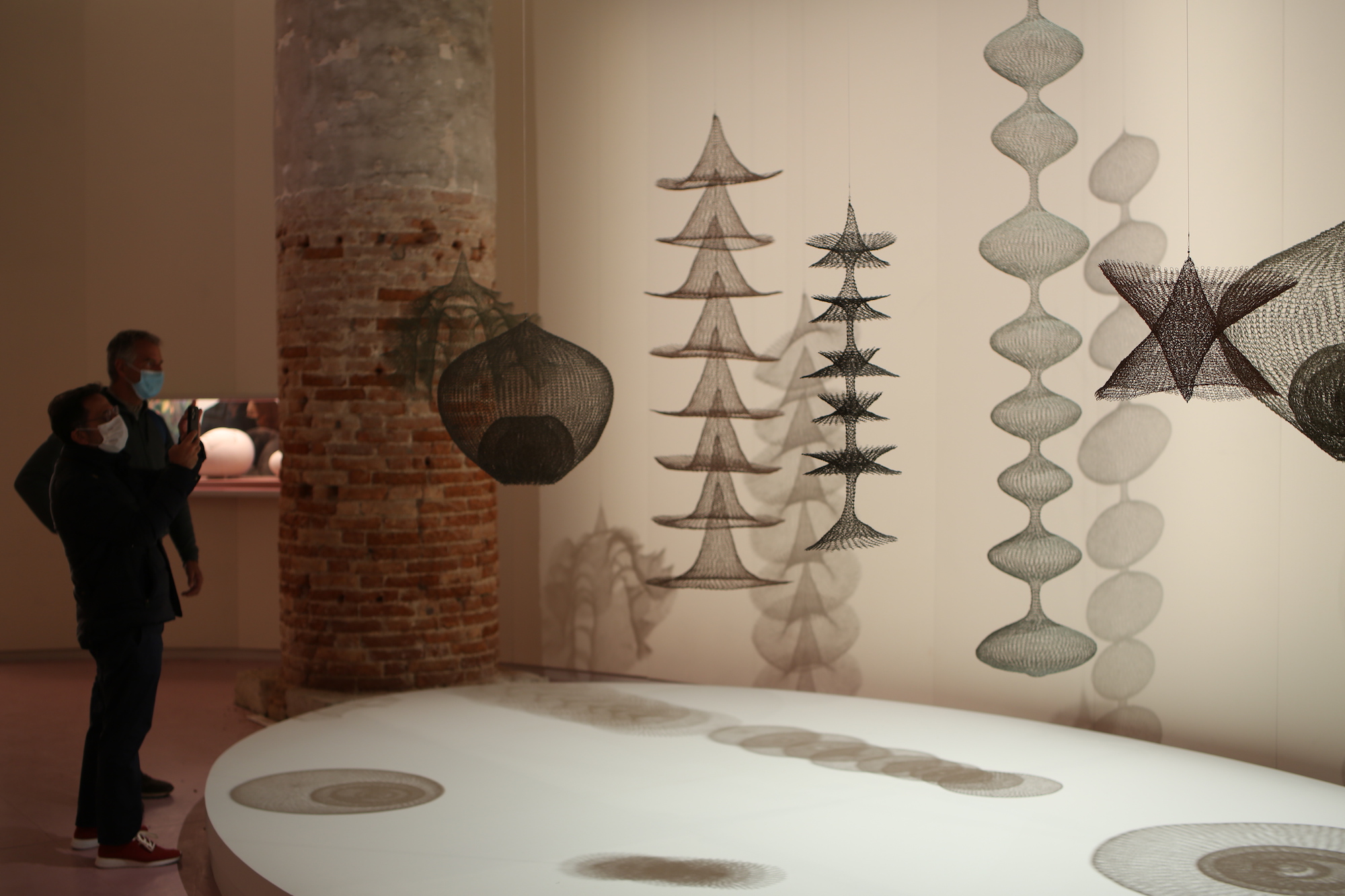
In the Polish Pavilion, Polish Romani artist and activist Małgorzata Mirga-Tas presents wall-to-wall tapestries that celebrate the lives of Roma people, particularly women, in Re-enchanting the World, 2022. Maria Eichhorn’s dismantling of the foundations of the Germany Pavilion, exposing the joints of the Nazi extension of 1938, in Relocating a Structure demonstrates the urgent need to dismantle oppressive histories.
I move on to see the first half of Milk of Dreams, curated by Cecilia Alemani. In it 90% of the artists are women or non-binary, rebalancing an unconscious (or deliberate) bias that has historically pervaded the Biennale. It reminds me how powerful and uplifting, as well as challenging and disturbing, experiencing the best of art in real life can be.
“The colourful traditional dress of the Sámi artists contrasts with the unofficial black dress code of the art world”
I finish off the day at Alberta Whittle’s compelling film deep dive (pause) uncoiling memory in the Scottish Pavilion. I then start my evening with drinks at the Peggy Guggenheim Collection (a chance to see their exhibition, Surrealism and Magic) before heading to the Sami Pavilion party.
As it starts to pour with rain, I make my way to the private boat carrying guests on to the Canadian party. After attempting to chat over the music, I make my way to the dance floor to give myself over to Detroit’s Techno Maestro, DJ Carl Craig.
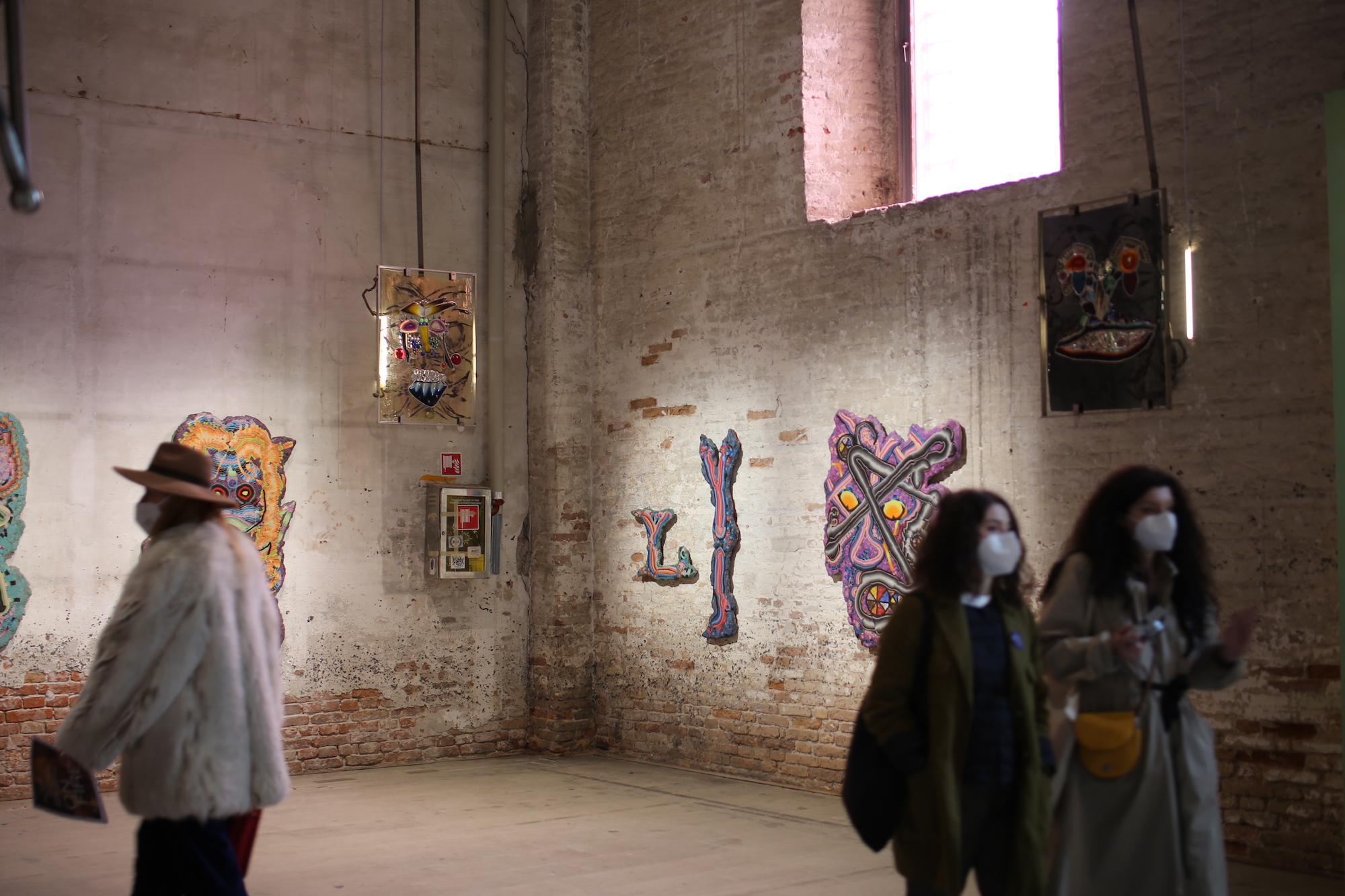
FRIDAY 22 APRIL
Knowing it would rain all day on Friday, I’d saved the Arsenale to last, the majority of it taken up by the second half of The Milk of Dreams. I take my time and enjoy so many highlights, including Candice Lin, Tau Lewis, Liliane Lijn, Lynn Hershman Leeson, Sandra Mujinga and Precious Okoyomon.
Another treat is the Irish Pavilion by Niamh O’Malley, then I’m out the other end of the Arsenale and beginning my journey back to London. I am happy to sit down at last on the long, slow waterbus ride from the Zattere to the airport. It’s after midnight when I finally make it to my bed, which I don’t leave again for the next 24 hours.
Katharine Stout is the director of Focal Point Gallery in England. She was previously the deputy director and head of programme at the Institute of Contemporary Arts, London, and curator of contemporary art at Tate Britain
Diaries
Elephant presents exclusive tell-all coverage from behind the scenes at the art world’s international events
READ MORE